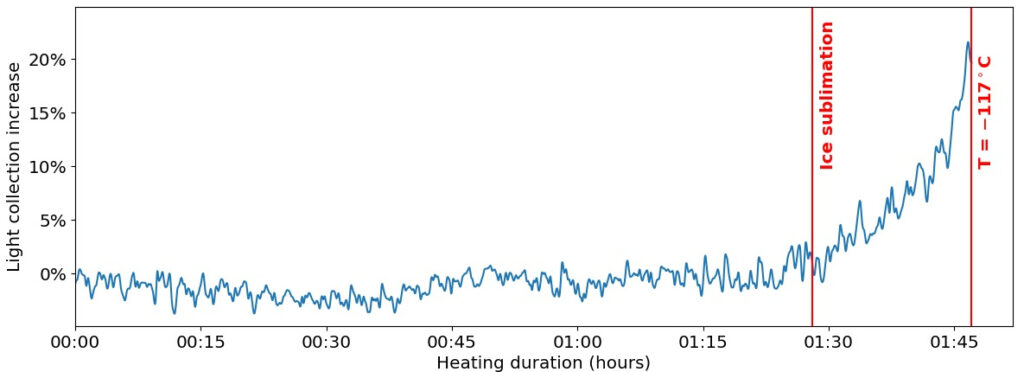Every space mission starts on Earth, in humid air and warm temperatures. After launch all satellites are then exposed to the vacuum of space, all air just rushes out, and everything cools down fast, to freezing temperatures of -150°C in the case of the Euclid space telescope. Once in space all that is left is the metal and Silicon Carbide and other materials that the instruments are made of. And a bit of water – which has consequences if it ends up as a thin layer on mirrors or lenses. Euclid just successfully removed ice and gained 15% of light transmission.
Water is unavoidable in satellites and space telescopes. All construction on Earth is taking place in laboratories and clean-rooms that require a certain humidity, around 50% relative humidity of the air, to prevent sparks in electronics. Humidity can actually enter some of the materials, especially plastic thermal and light insulation sheets called “multi-layer insulation”. These shield Euclid and other space missions from the cold of space, or light and heat of the Sun. They consist of many layers of very thin aluminised plastic sheets and this plastic can absorb up to 1% of its mass in water.
This water can then outgass over time as has been seen in previous missions like ESA’s GAIA satellite, and was also expected for Euclid’s telescope and instruments. Their design already took this into account, to minimise the amount of water that could out-gas, but there were also “decontamination” plans made. These would use heaters that are distributed across Euclid’s instrument bay and the telescope’s mirrors, to warm up different parts, allowing potential ice layers to evaporate. It was just the question: how much ice buildup would Euclid see and how quickly would it happen?
After now about 9 months in space, there were clear signs of the expected ice buildup, not impacting the sharpness of Euclid’s images, but simply decreasing the instrument’s sensitivity. So ESA and the Euclid Consortium carefully planned a step-by-step “surgical” decontamination process that was now carried out. It was a full success! Euclid gained back an additional 15% of transmitted light compared to before the start of the campaign – which including cool-down times only took a few days.

Change of Euclid’s transmission of light during the de-icing warmup. It took only a few minutes to warm up one of the mirrors in Euclid from -143°C to -113°C, enough to evaporate water ice in vacuum. The transmission increased by about 15% in these few minutes. And remained as good after cool-down.
Image: EC/ESA
The overall duration of this decontamination campaign and following temperature stabilisation is really short and would permit repeating such a decontamination campaign every couple of month, if necessary, without much impact on Euclid’s 6-year survey schedule. This is a comfortable situation and was only made possible by a combination of extensive planning and simulations by the Euclid Consortium, ESA, and industry partners beforehand.
A detailed description of the background, the origin of water contamination, and the successfull decontamination campaign is given by the Euclid Calibration Lead Dr. Mischa Schirmer (MPIA, Germany) in this video:
Interview conducted by Yuzheng Kang (EC, University Geneva, Switzerland)
With this successfull removal of ice from its optical path, Euclid will now continue its survey of ~1/3 of the whole sky. Euclid’s mission is to bring more light into the “dark sector” of the Universe – more understanding of dark matter and dark energy – as well as to enable a myriad of other astronomical research projects.


